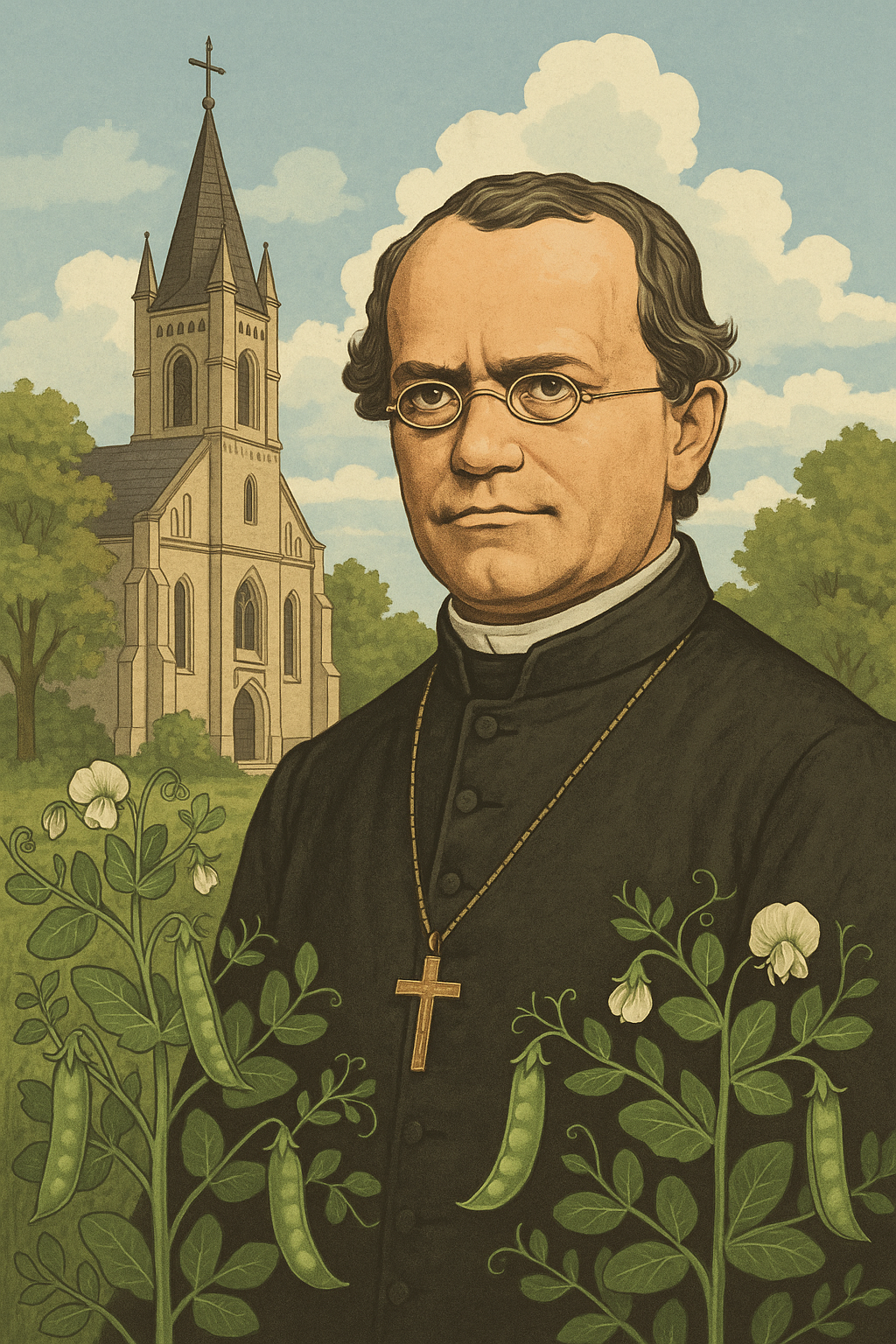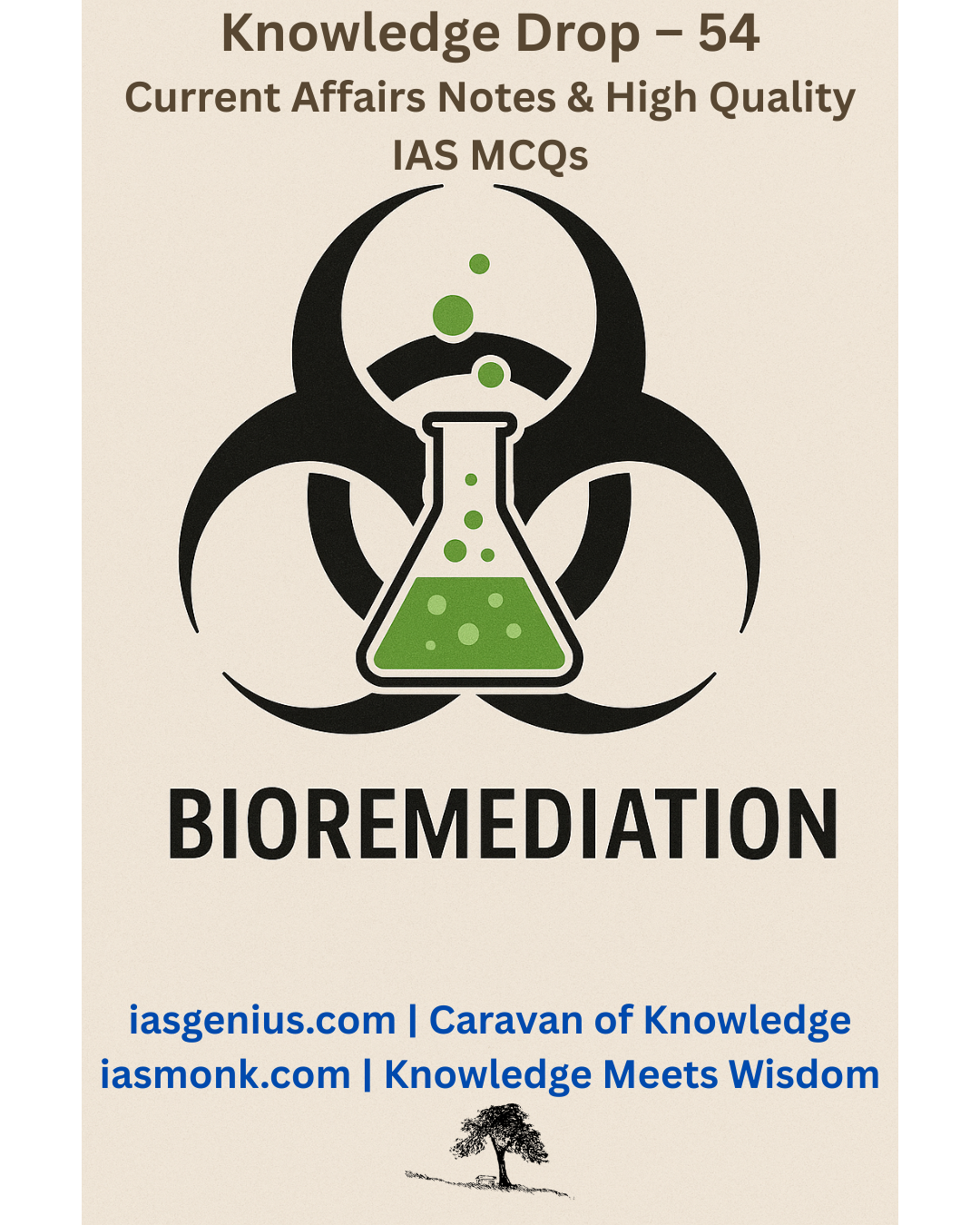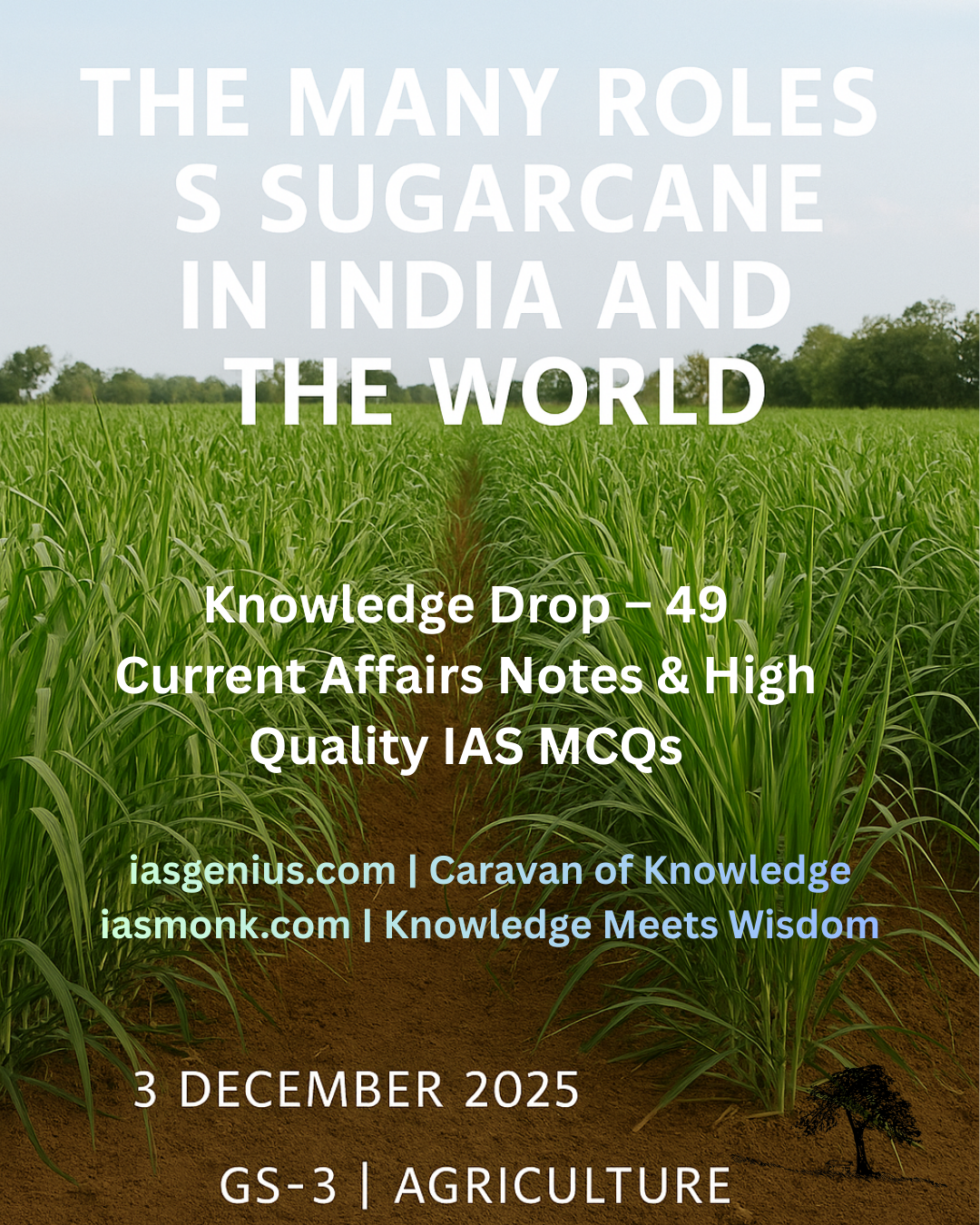
🧭May 30, 2025 Post 3: Mendel’s Legacy Reinvented: Decoding Inheritance, One Pea at a Time | High Quality Mains Essay | Prelims MCQs
Mendel’s Legacy Reinvented: Decoding Inheritance, One Pea at a Time

SCIENCE & TECH HERO
Post Date: 30 May 2025
Syllabus: GS Paper 3 – Science and Technology | Genetics and Biotechnology
Category: Genetics / Genome Research / Classical Biology
🎯 Thematic Focus:
Mendelian Genetics, Sustainable Agriculture, Plant Breeding Innovation
🌿 Intro Whisper:
In a quiet monastery garden, he watched peas grow. Little did he know, those silent seeds held the blueprint of heredity for every living being.
🗝️ Key Highlights
- Landmark Genome Study: A global team including John Innes Centre (UK) and Chinese Academy of Agricultural Sciences has mapped the genomic diversity of pea plants, linking 70+ traits to specific genomic locations.
- Rediscovering Mendel: This research revisits the same seven traits that Gregor Mendel used to discover the fundamental laws of inheritance — seed shape, seed color, pod shape, pod color, flower color, plant height, and flower position.
- Agricultural Impact:
- Accelerates disease-resistant, nitrogen-fixing, climate-smart pea varieties
- Advances AI-based predictive breeding for improved yield
- Builds a global genomic gene bank for legume research
- Environmental Importance: Peas and other legumes can fix atmospheric nitrogen, making them sustainable, low-input crops vital for future food systems.
📚 Concept Explainer: Mendel’s Laws of Inheritance
🌱 Why Pea Plants?
Mendel chose them because they:
- Have distinct, observable traits
- Are easy to cross- and self-pollinate
- Grow and reproduce quickly
⚖️ Mendel’s Three Laws
- Law of Segregation
- Each trait is controlled by two alleles (dominant/recessive)
- During gamete formation, the alleles segregate, and only one is passed to offspring
- Law of Independent Assortment
- Genes for different traits (e.g., height, seed color) assort independently
- Allows for new combinations and genetic variation
- Law of Dominance
- In a pair of dissimilar alleles (e.g., Tt), the dominant allele masks the recessive one
- Only the dominant trait is expressed in the phenotype
🌾 Mendel’s Seven Classic Traits and Results (See Table)
- Seed Shape: Round (dominant) vs Wrinkled
- Seed Color: Yellow (dominant) vs Green
- Pod Shape: Inflated vs Constricted
- Pod Color: Green vs Yellow
- Flower Color: Purple vs White
- Plant Height: Tall vs Short
- Flower Position: Axial vs Terminal
All expressed in ~3:1 ratios in F₂ generations — a proof of predictable inheritance.
🧬 Modern Relevance of Mendel’s Work
- Genomic editing tools like CRISPR are still based on principles of allelic expression
- Breeding programs rely on Mendelian ratios to predict trait transmission
- Genetic counselling and medicine use dominant/recessive models for disease detection
🌍 GS Mains Mapping
- GS Paper 3:
- Science & Technology: Biotechnology and Genetics
- Environment: Sustainable Agriculture, Nitrogen Cycle
- Agriculture: Crop Improvement, AI in Plant Breeding
- GS Paper 1:
- History of Science: Mendel’s legacy in biology
💭 A Thought Spark — by IAS Monk
“He planted more than peas — he planted a pattern. In the symmetry of seeds, Mendel sowed the first map of life.”
High Quality Mains Essay For Practice :
Word Limit 1000-1200
Mendel’s Legacy and the Laws of Inheritance: From Pea Plants to Precision Genomics
Introduction
In the peaceful courtyard of a monastery in Brno, Czech Republic, a monk named Gregor Mendel was quietly planting the seeds of what would become the science of genetics. Through years of patient observation of pea plants, Mendel uncovered fundamental principles governing the inheritance of traits—laws that would revolutionize biology, agriculture, and medicine. Over a century and a half later, a global team of scientists has returned to Mendel’s original subject—the humble pea—not just to validate his insights, but to unlock the future of sustainable agriculture through genomics and artificial intelligence.
In May 2025, researchers from the John Innes Centre (UK), the Chinese Academy of Agricultural Sciences, and collaborators from the USA and France announced a comprehensive mapping of pea genome diversity, connecting more than 70 agronomic traits to specific gene locations. This milestone renews the relevance of Mendel’s work in modern science, reaffirming the timelessness of his methods and the evolving applications of his discoveries.
The Original Experiments: Why Peas?
Mendel’s choice of Pisum sativum (garden pea) was no accident. These plants possess several ideal characteristics for genetic study:
- They exhibit clear, binary traits (e.g., tall vs. short, yellow vs. green seeds).
- They self-pollinate, allowing genetic consistency across generations.
- They can be cross-pollinated, enabling controlled breeding.
- They grow rapidly and produce numerous offspring, ideal for statistical analysis.
Mendel focused on seven key traits, each with two contrasting expressions:
- Seed shape – Round (dominant) vs. Wrinkled (recessive)
- Seed color – Yellow (dominant) vs. Green
- Pod shape – Inflated vs. Constricted
- Pod color – Green vs. Yellow
- Flower color – Purple vs. White
- Plant height – Tall vs. Short
- Flower position – Axial vs. Terminal
Through thousands of crosses and meticulous record-keeping, Mendel laid the foundation for classical genetics.
Mendel’s Three Laws of Inheritance
1. Law of Segregation
Every individual possesses two alleles for a given trait—one inherited from each parent. These alleles segregate during gamete formation, ensuring each gamete carries only one allele. Upon fertilization, the zygote receives one allele from each parent.
Example: In a heterozygous tall plant (Tt), 50% of gametes carry T, and 50% carry t. When crossed, offspring exhibit a 3:1 ratio of tall to short plants.
2. Law of Independent Assortment
Genes for different traits segregate independently during gamete formation. That means the inheritance of seed color (yellow/green) does not affect seed shape (round/wrinkled), provided the genes are on separate chromosomes.
This explains the genetic diversity observed among offspring and supports the idea of polygenic traits in modern science.
3. Law of Dominance
In a heterozygous condition, the dominant allele masks the expression of the recessive allele. For instance, in genotype Yy (Yellow x Green seed), yellow appears in the phenotype because Y is dominant over y.
Mendel’s ratios (3:1 in F₂ generation) across all seven traits confirmed this pattern.
Scientific Significance of Mendel’s Work
Though Mendel published his findings in 1866, his work went largely unnoticed until rediscovered in 1900 by scientists like Hugo de Vries and Carl Correns. Today, Mendel is recognized as the father of modern genetics.
His methods introduced:
- Empirical research with mathematical precision
- The use of ratios and probabilities to predict inheritance
- The concept of heritable units (genes) decades before DNA was discovered
Mendel’s framework became the cornerstone for chromosomal theory, molecular genetics, and biotechnology.
The Modern Turn: Genomic Mapping of Peas
The 2025 global research initiative revisits Mendel’s peas not just to honor history, but to leverage the past for future food security.
Key Outcomes:
- More than 70 agronomic traits (yield, drought resistance, nutrient content) have been mapped to specific genome regions.
- Genetic markers now enable predictive breeding.
- Artificial Intelligence models can now simulate trait inheritance and suggest optimal gene combinations.
- A gene bank of pea diversity has been expanded, preserving rare and wild strains critical for resilience.
This leap in genomic research enables breeders to select for traits intelligently, saving time, cost, and effort in traditional hybridization.
Applications in Agriculture and Sustainability
1. Boosting Pulse Production
Peas and other legumes (lentils, chickpeas) are vital protein sources, especially in vegetarian diets. Genomic insight helps enhance:
- Protein content
- Drought resistance
- Early maturity
2. Nitrogen Fixation and Soil Health
Legumes form symbiotic relationships with Rhizobium bacteria, fixing atmospheric nitrogen into the soil—reducing the need for chemical fertilizers. Improving pea genetics supports natural fertilization and climate-smart agriculture.
3. Climate Resilience
With rising temperatures and erratic rainfall, crops that can be tailored genetically for stress-resilience will be key. Mendel’s models, now enhanced by AI, can predict plant success under varying conditions.
4. Precision Breeding
Instead of relying on trial and error, breeders can now:
- Use marker-assisted selection (MAS)
- Apply CRISPR-Cas9 to directly modify genes
- Preserve and reintroduce lost traits from ancient strains
Educational Legacy and Scientific Values
Mendel’s contribution is not just scientific — it’s philosophical and methodological. His approach embodies:
- Hypothesis-driven inquiry
- Use of statistical validation
- Long-term observation and patience
His legacy reminds us that groundbreaking discoveries often begin with curiosity and simplicity.
In an era where genetic technology is increasingly abstract and digital, Mendel’s handwritten tables and garden crosses are a beacon of clarity and discipline.
Challenges and Ethical Considerations
While modern genetics offers powerful tools, it also raises ethical questions:
- Who owns genetic data of indigenous crops?
- Will genome-editing widen inequality in agriculture?
- How do we preserve traditional varieties while improving yield?
These questions require democratic participation, legal frameworks, and ethical stewardship.
The Future: Genetics Beyond the Garden
The implications of Mendel’s work now extend far beyond agriculture:
- Gene therapies in human health
- Personalized medicine based on inheritance
- Conservation genetics to preserve biodiversity
- AI-driven trait prediction in animal husbandry and aquaculture
By linking basic inheritance with modern computation, we stand at the intersection of biology and big data — with Mendel’s model still guiding the way.
Conclusion
From monk to genome mapper, Mendel’s journey is one of timeless relevance. His laws of inheritance, first observed in the flowering simplicity of pea plants, now anchor the complex architecture of global food systems and genetic engineering.
The 2025 pea genome research not only reaffirms his theories but also projects them into the future — toward sustainability, food security, and a world where we grow not just crops, but knowledge.
Closing Quote
“Mendel did not just split peas—he split ignorance from understanding. In every trait he tracked, he traced the blueprint of life itself.” — IAS Monk
Target IAS-26: Daily MCQs :
📌 Prelims Practice MCQs
Topic: Mendel’s Legacy Reinvented: Decoding Inheritance, One Pea at a Time
MCQ 1 – Type 1: How many of the above statements are correct?
Consider the following statements regarding Mendel’s experiments and genetic principles:
Mendel worked with seven traits of pea plants, including seed shape and flower color.
The Law of Independent Assortment states that alleles of a single gene segregate independently during gamete formation.
Mendel’s work was initially ignored and only recognized after 1900.
Pea plants were ideal for Mendel’s studies because they show binary traits and can self-pollinate.
How many of the above statements are correct?
A) Only two
B) Only three
C) All four
D) Only one
🌀 Didn’t get it? Click here (▸) for the Correct Answer & Explanation
✅ Correct Answer: B) Only three
🧠 Explanation:
•1) ✅ True – Mendel worked with 7 pairs of contrasting traits.
•2) ❌ False – This describes the Law of Segregation, not Independent Assortment.
•3) ✅ True – His findings were rediscovered by scientists in 1900.
•4) ✅ True – Peas are ideal due to quick growth, clear traits, and pollination control.
MCQ 2 – Type 2: Two Statements Based
Consider the following statements:
1. According to Mendel’s Law of Dominance, the recessive allele is always expressed in heterozygous conditions.
2. The recent pea genome study identified more than 70 agronomic traits and mapped them to specific genomic regions.
Which of the above statements is/are correct?
A) Only 1 is correct
B) Only 2 is correct
C) Both are correct
D) Neither is correct
🌀 Didn’t get it? Click here (▸) for the Correct Answer & Explanation
✅ Correct Answer: B) Only 2 is correct
🧠 Explanation:
•1) ❌ False – In heterozygous condition, the dominant allele is expressed, not the recessive.
•2) ✅ True – The 2025 study mapped 70+ traits to specific genomic locations.
MCQ 3 – Type 3: Which of the statements is/are correct?
Which of the following are reasons Mendel chose pea plants for his genetic studies?
1. Peas exhibit easily distinguishable binary traits.
2. Peas can be both self- and cross-pollinated.
3. Peas contain high levels of chlorophyll and protein.
4. Peas grow and reproduce quickly.
Select the correct code:
A) 1 and 2 only
B) 1, 2 and 4 only
C) 2, 3 and 4 only
D) 1, 3 and 4 only
🌀 Didn’t get it? Click here (▸) for the Correct Answer & Explanation
✅ Correct Answer: B) 1, 2 and 4 only
🧠 Explanation:
•1) ✅ True – Clear dominant/recessive traits (e.g., tall vs short).
•2) ✅ True – This allowed controlled experiments.
•3) ❌ False – While nutritionally relevant, this was not Mendel’s reason.
•4) ✅ True – Short life cycles enabled faster results.
MCQ 4 – Type 4: Direct Fact
Which law of inheritance explains why seed color and plant height do not influence each other’s inheritance?
A) Law of Segregation
B) Law of Dominance
C) Law of Uniformity
D) Law of Independent Assortment
🌀 Didn’t get it? Click here (▸) for the Correct Answer & Explanation.
✅ Correct Answer: D) Law of Independent Assortment
🧠 Explanation:
• •The Law of Independent Assortment states that genes located on different chromosomes are inherited independently, explaining variation in offspring.


















